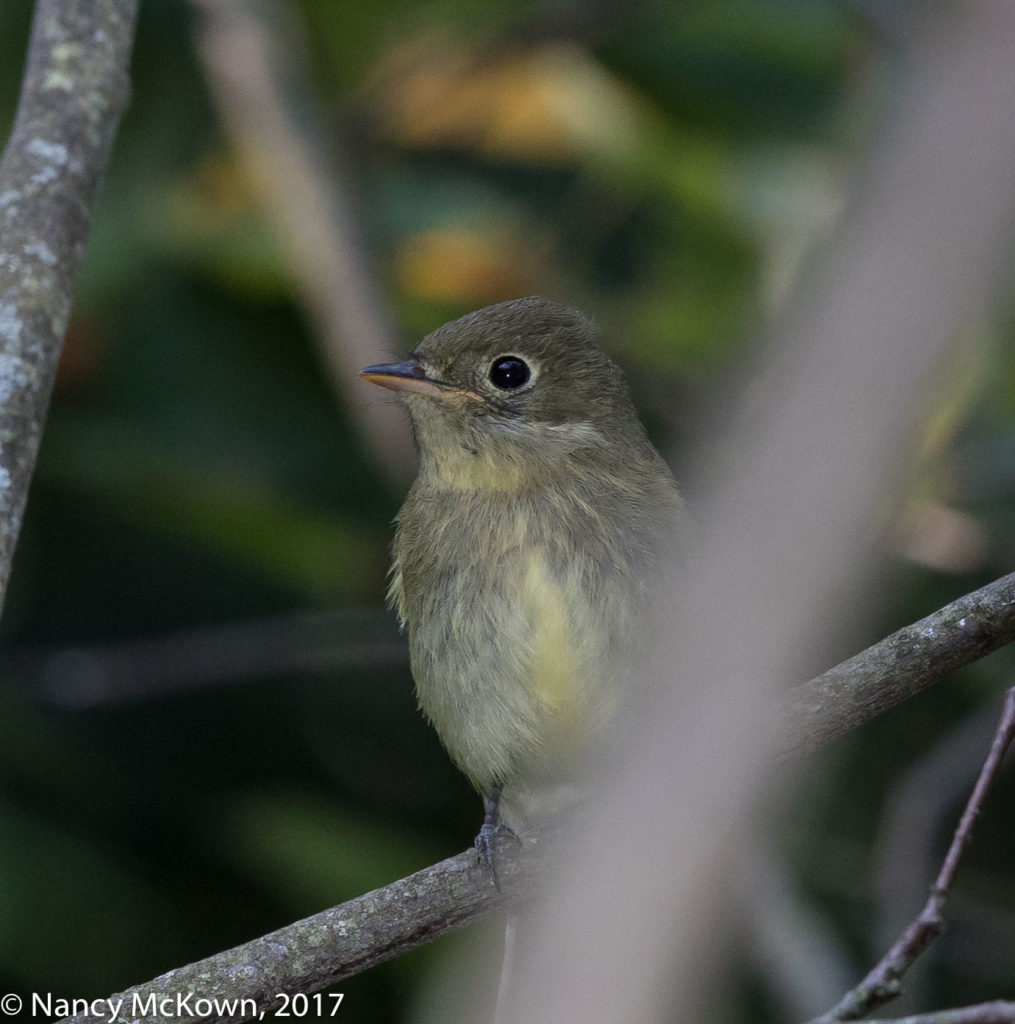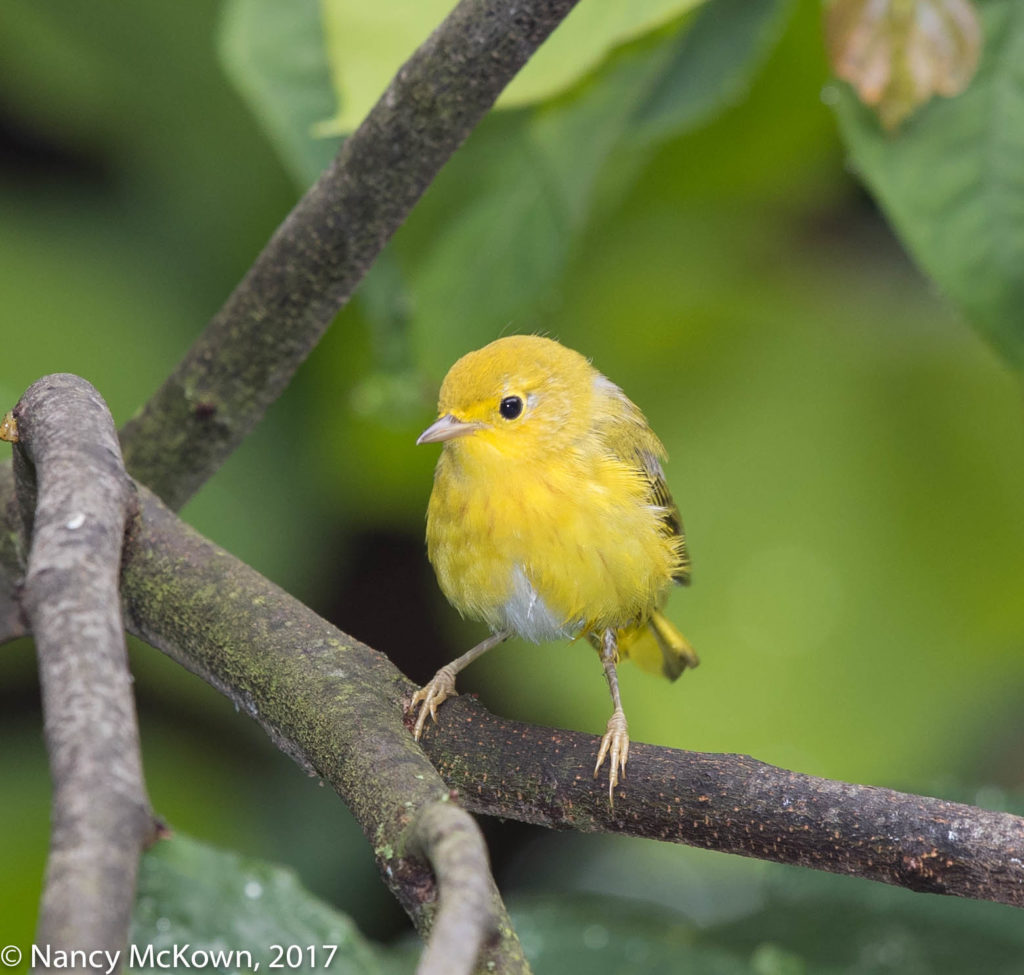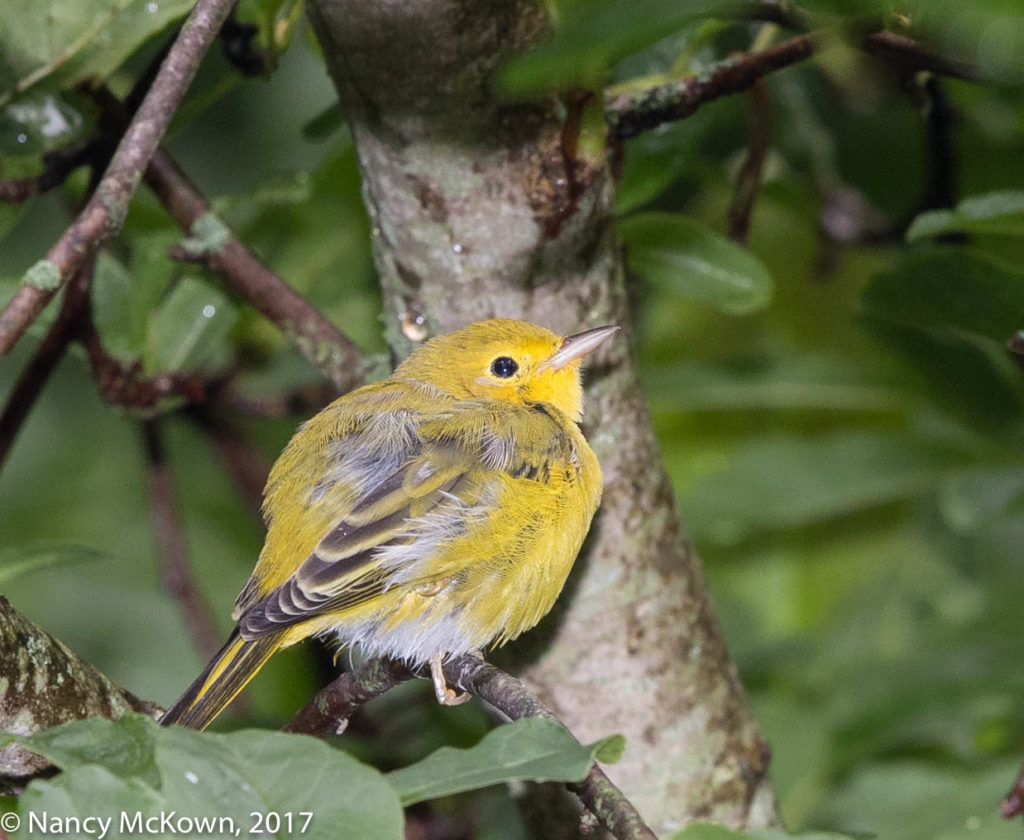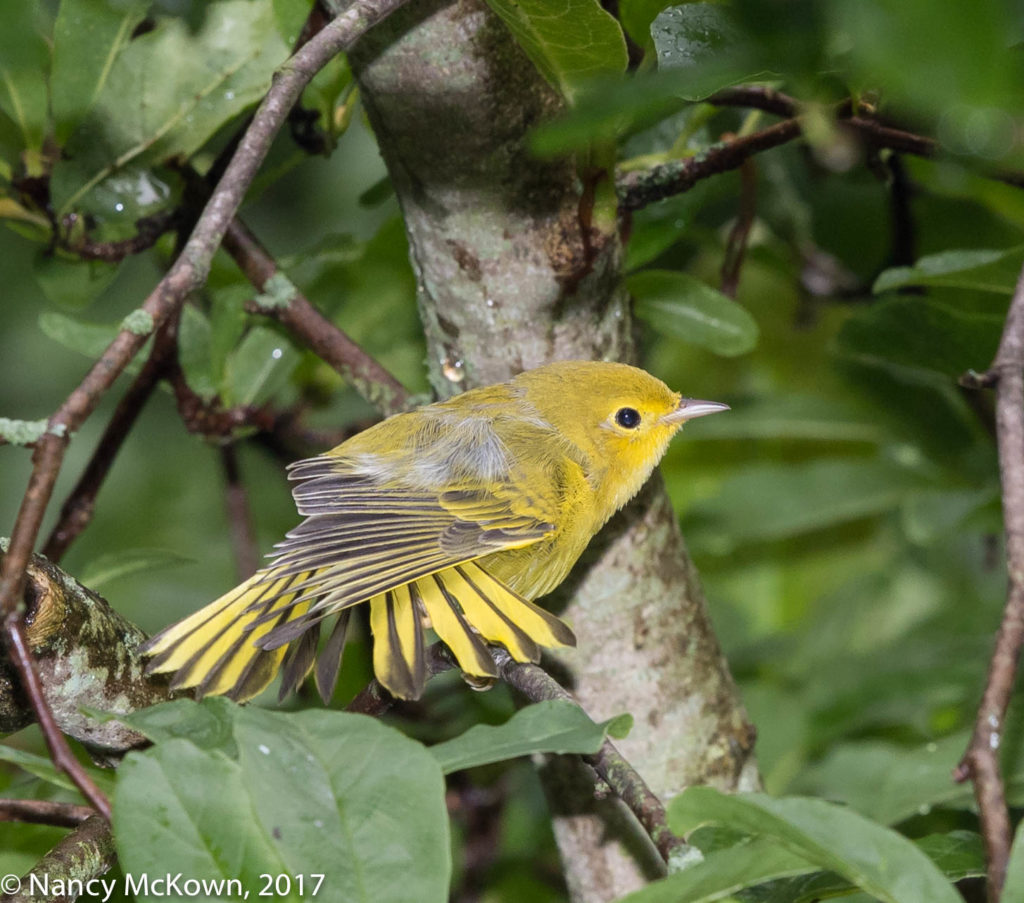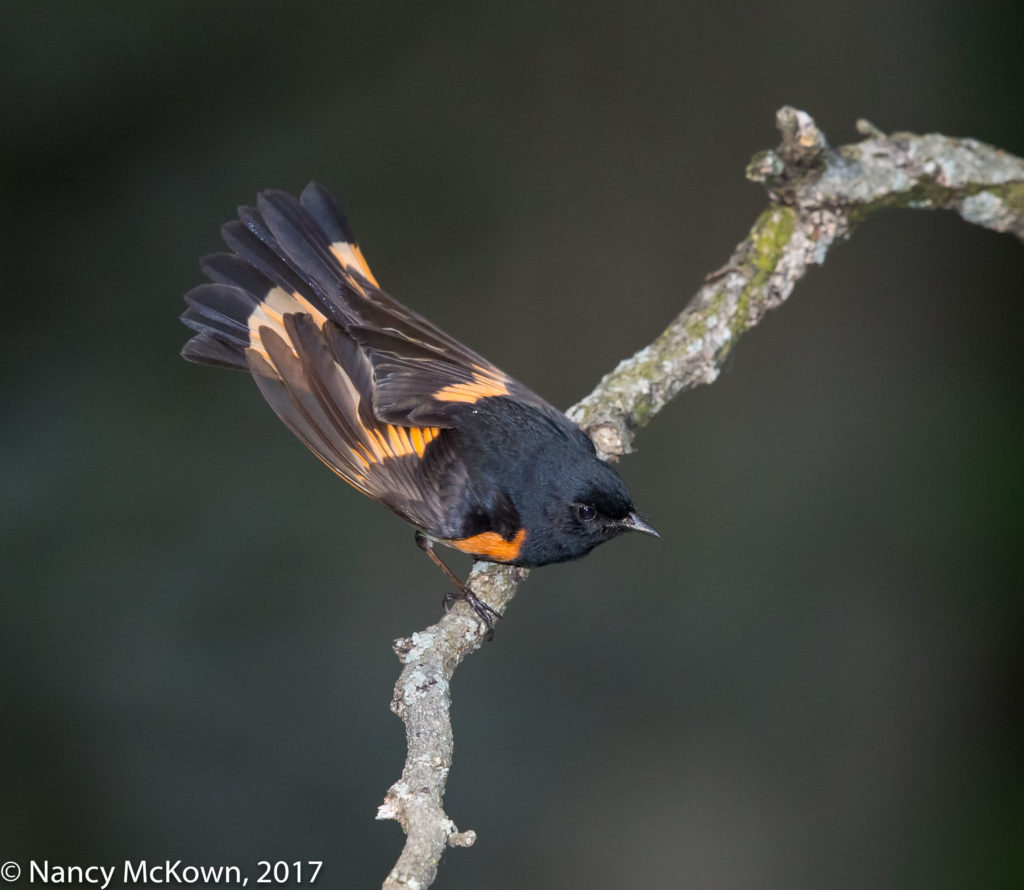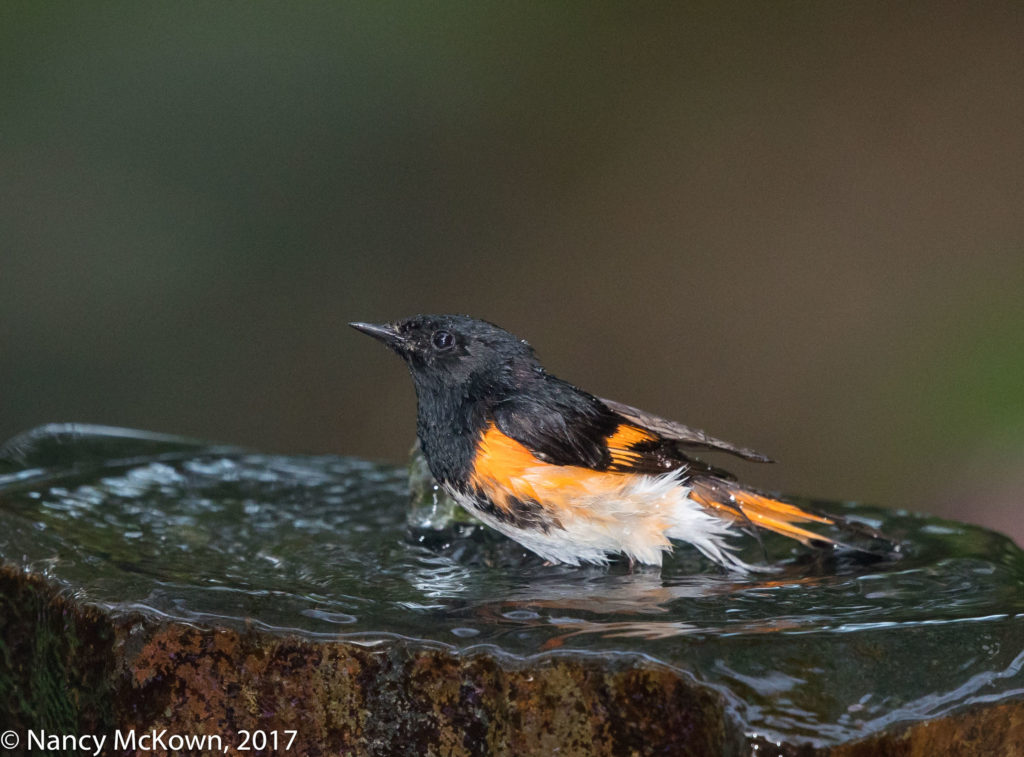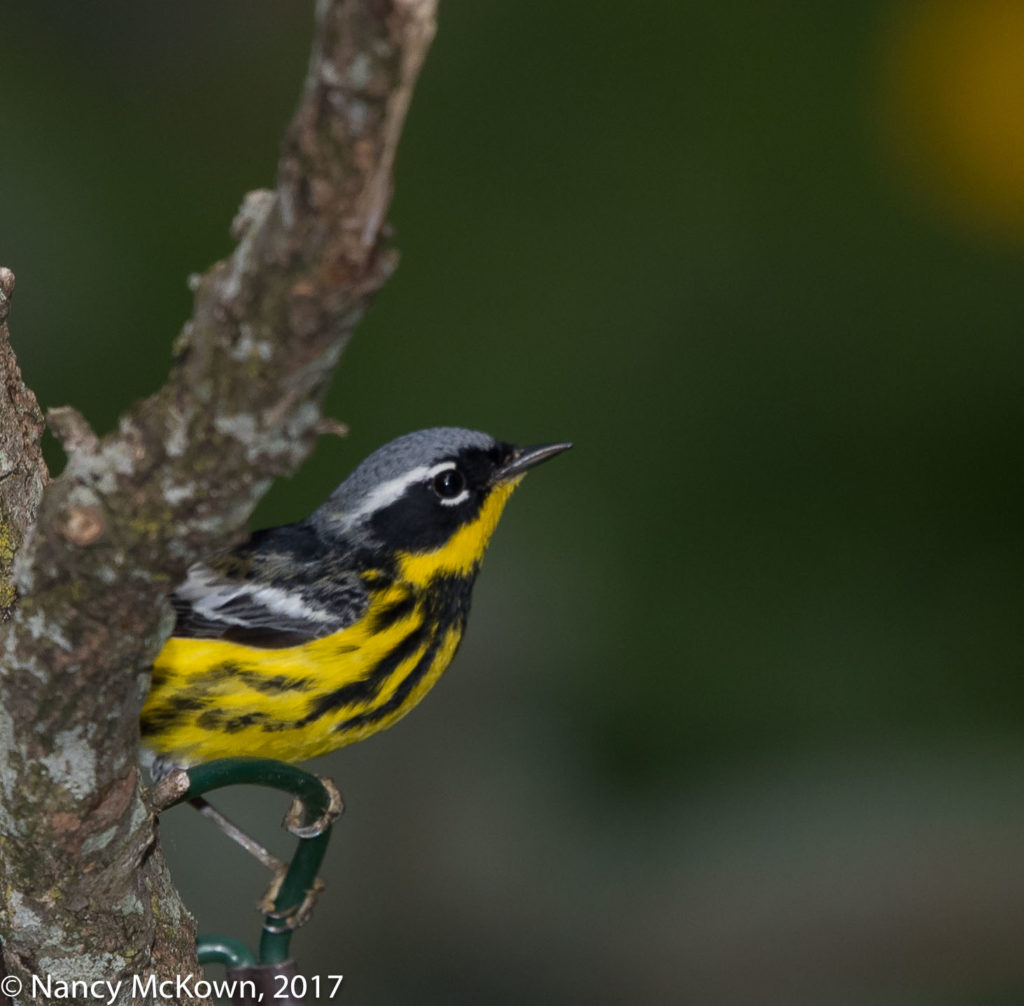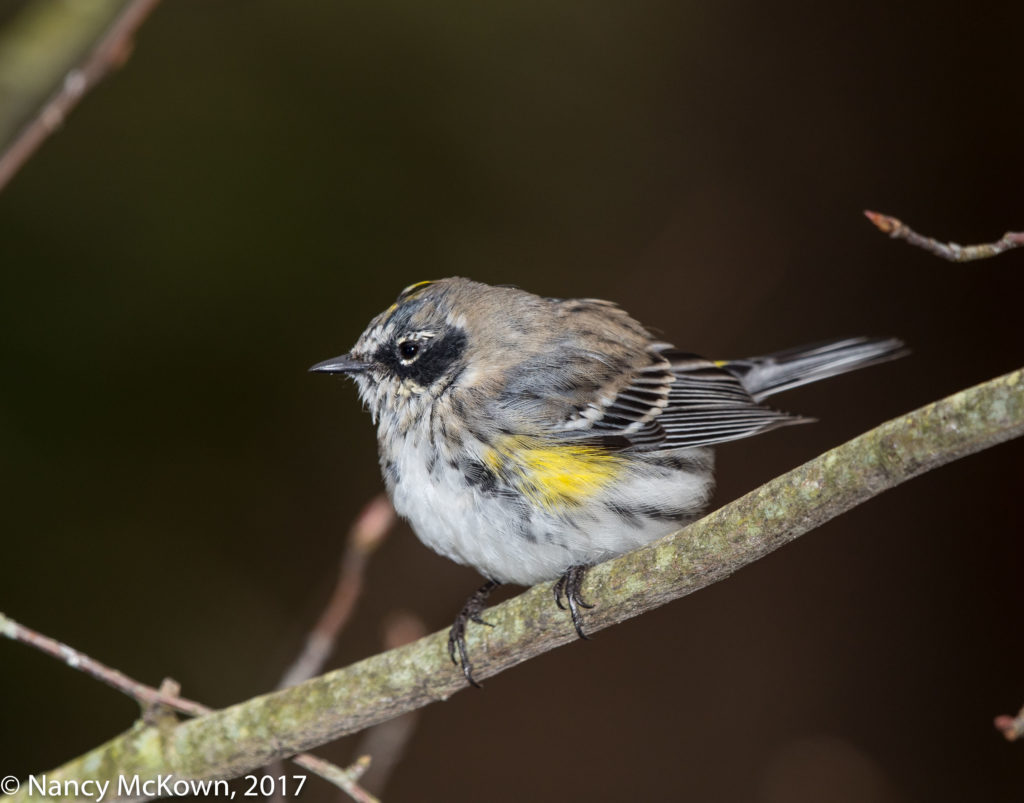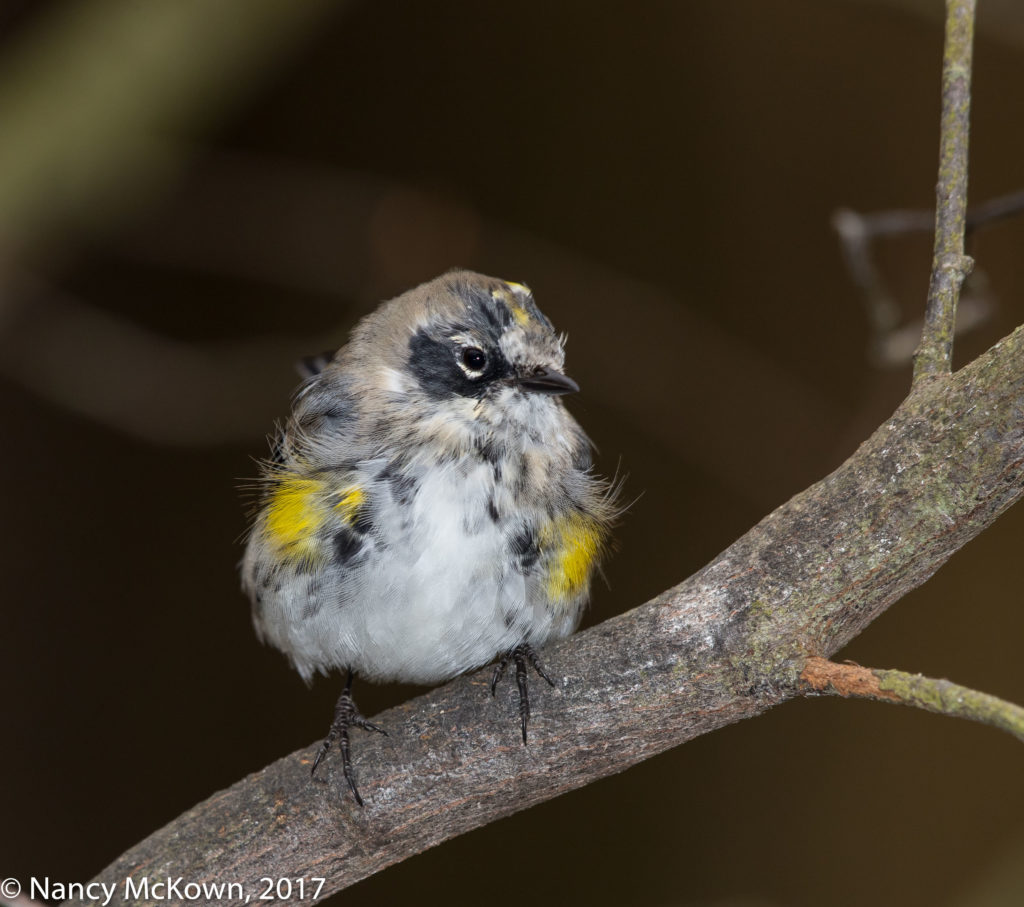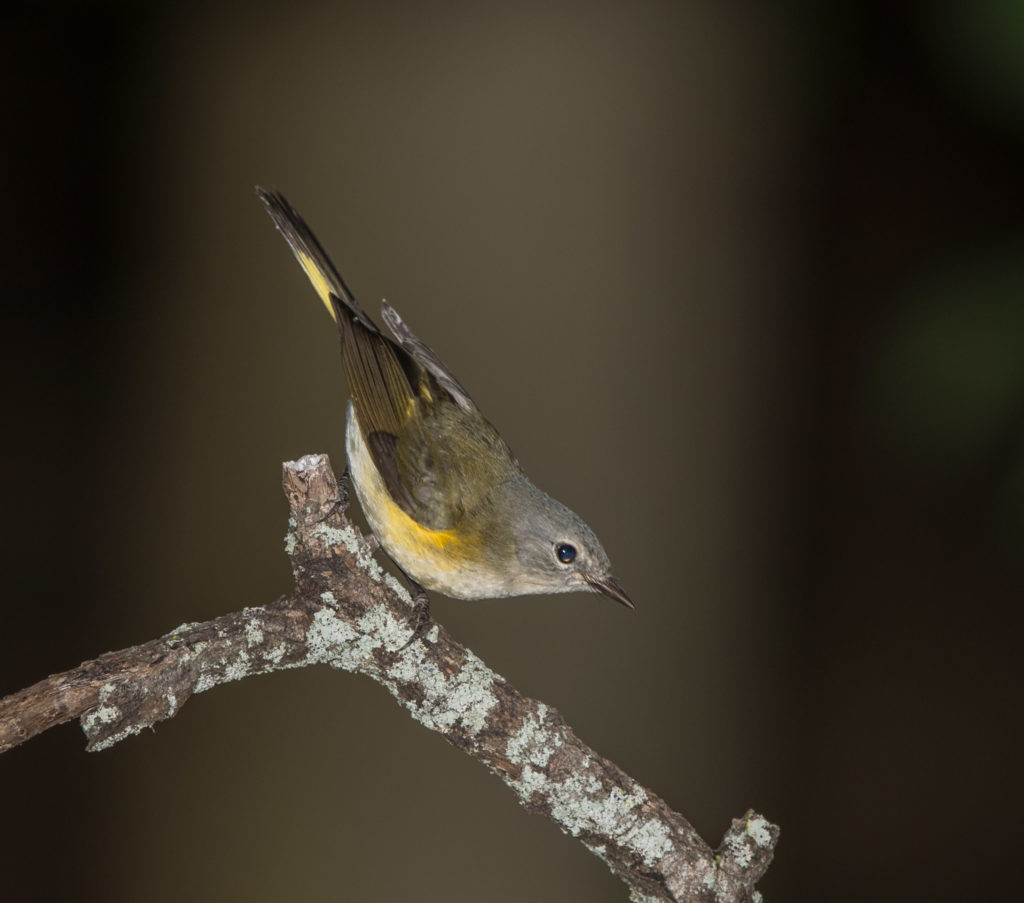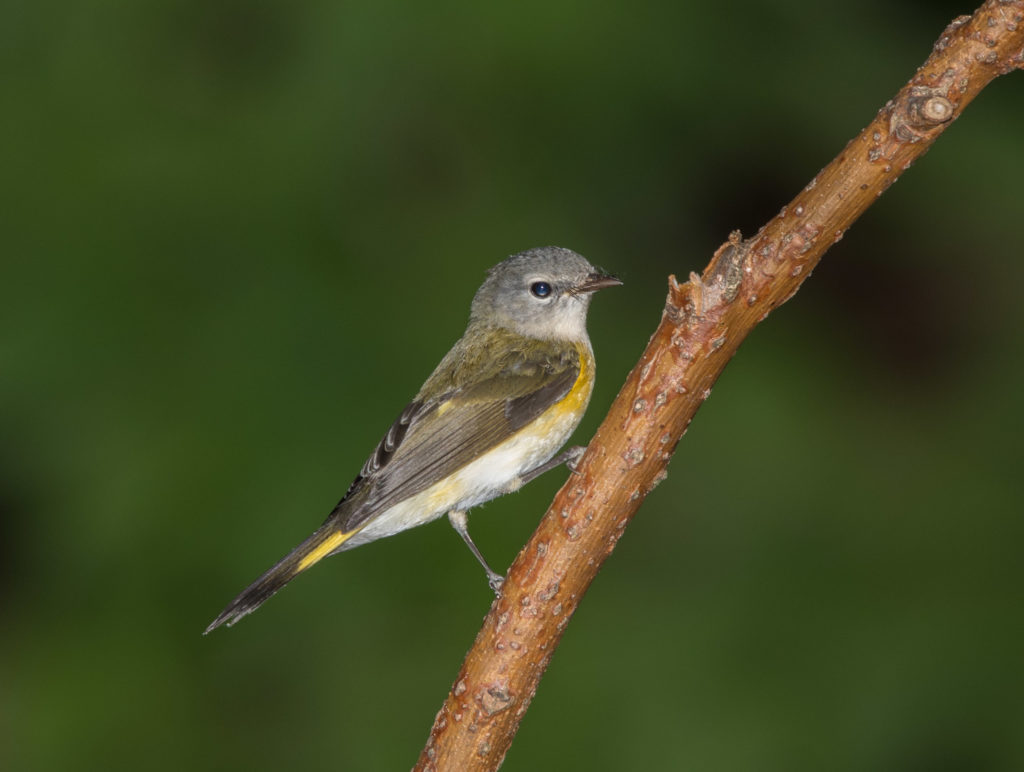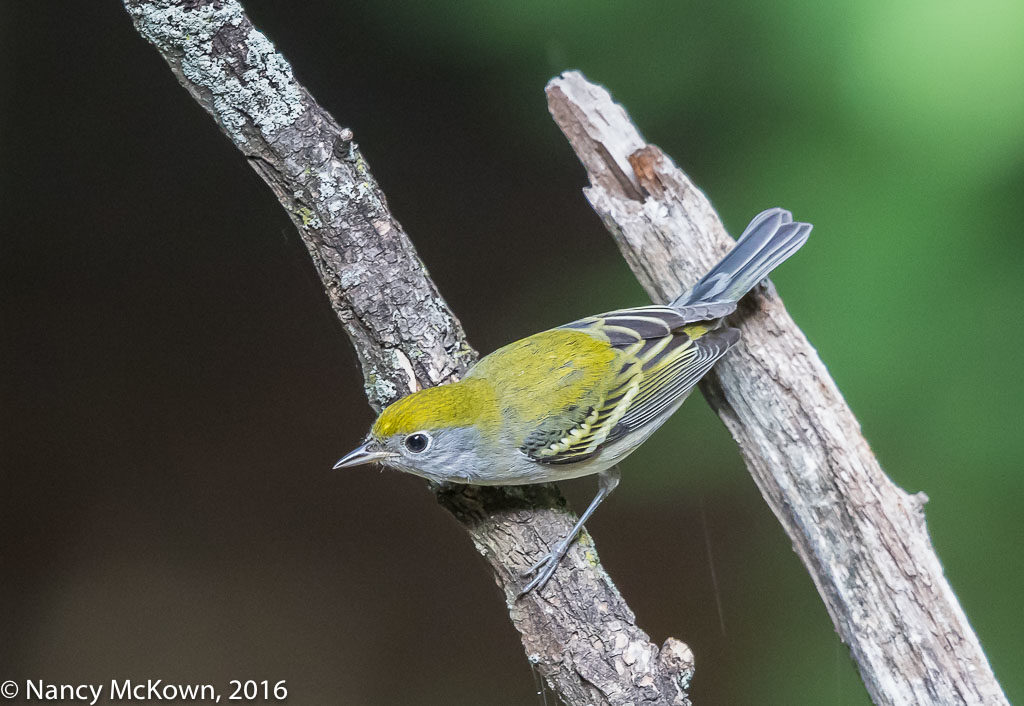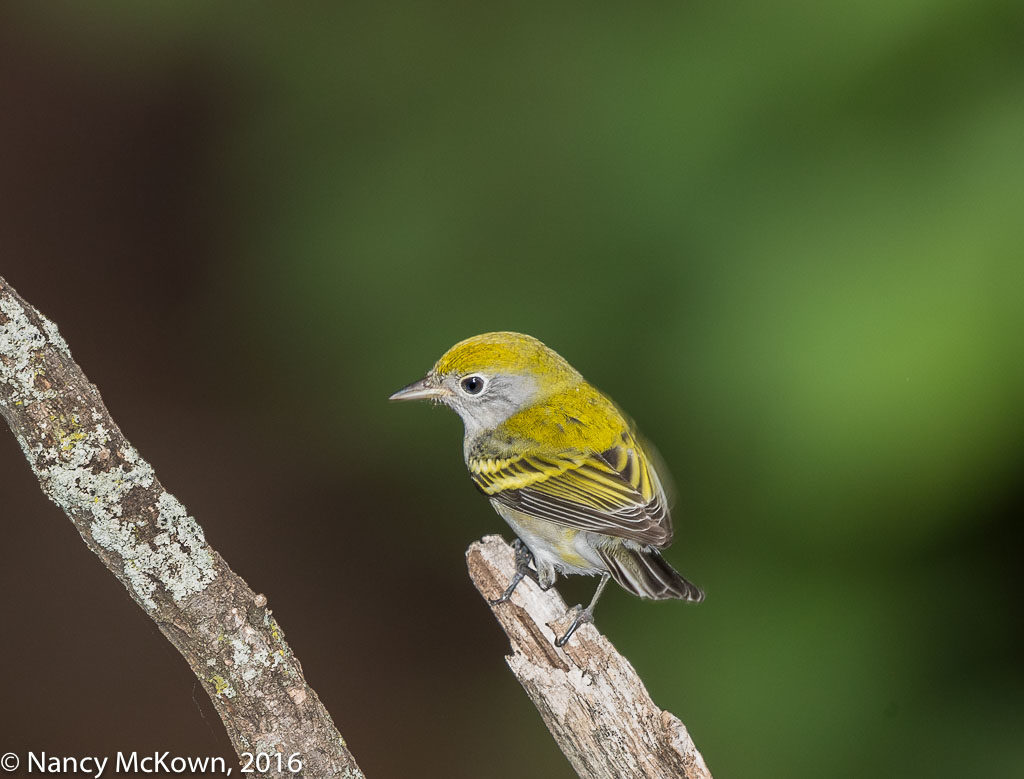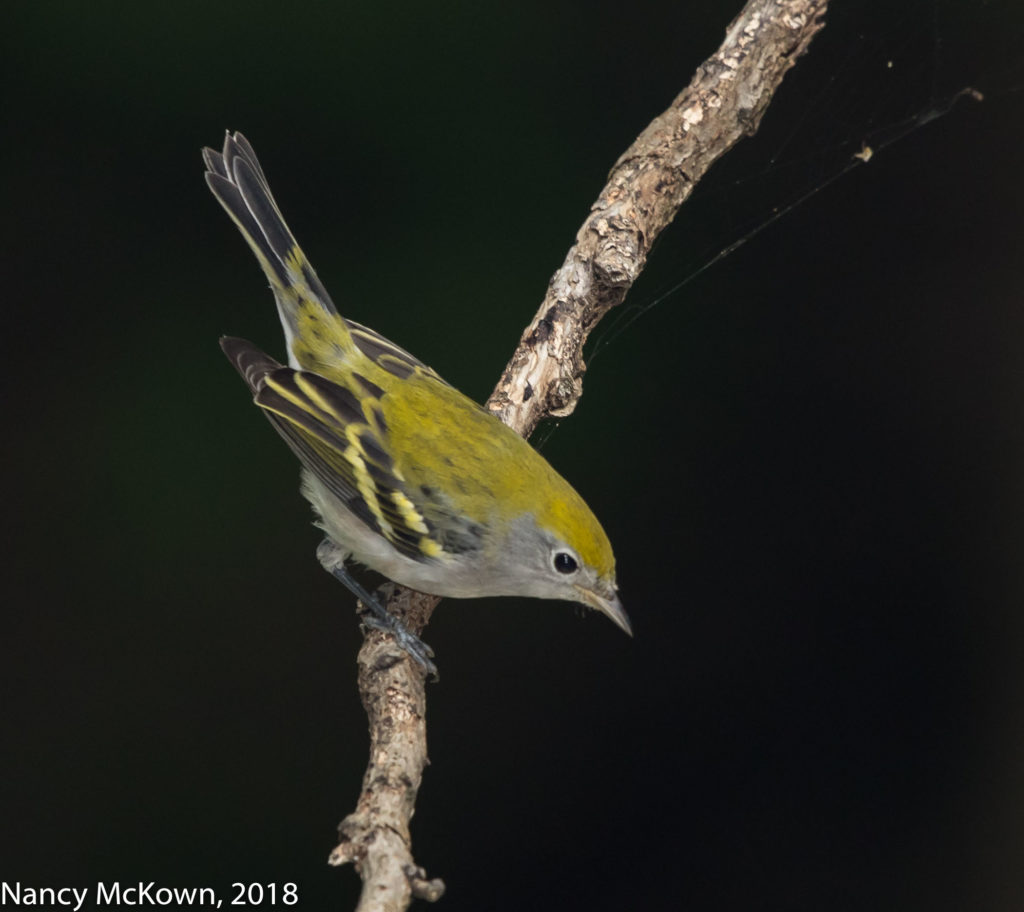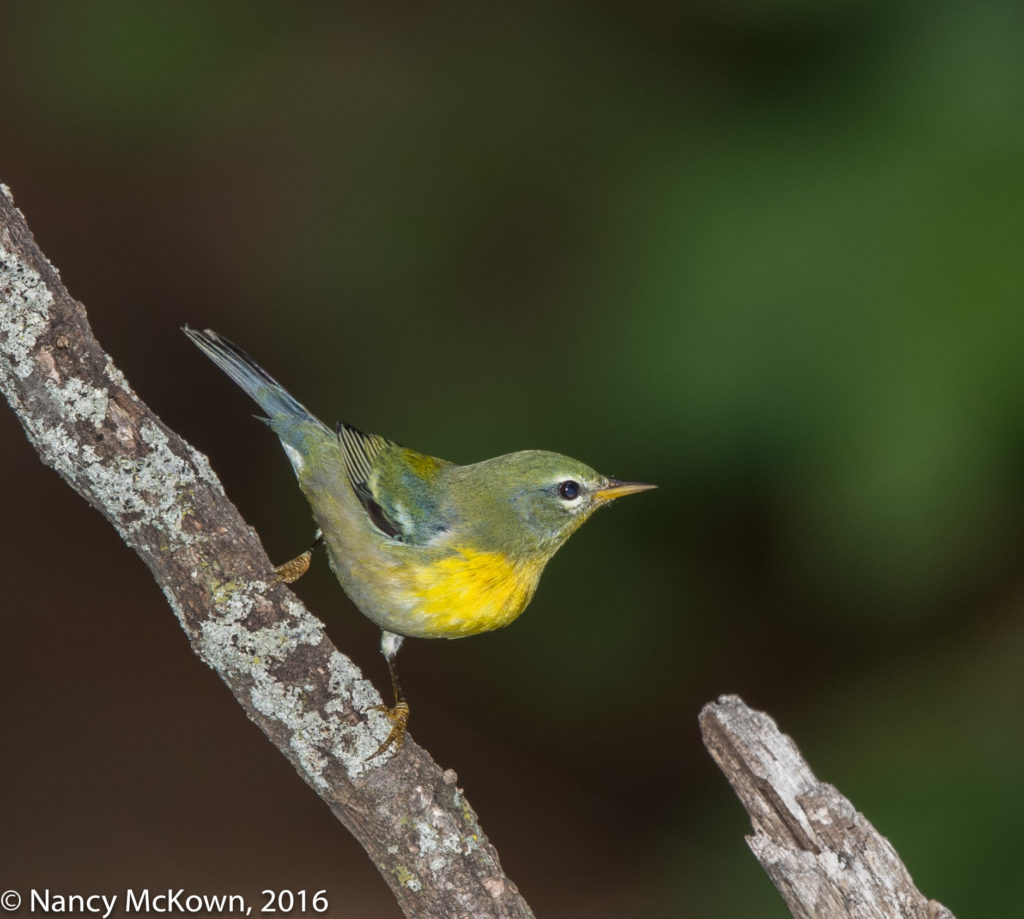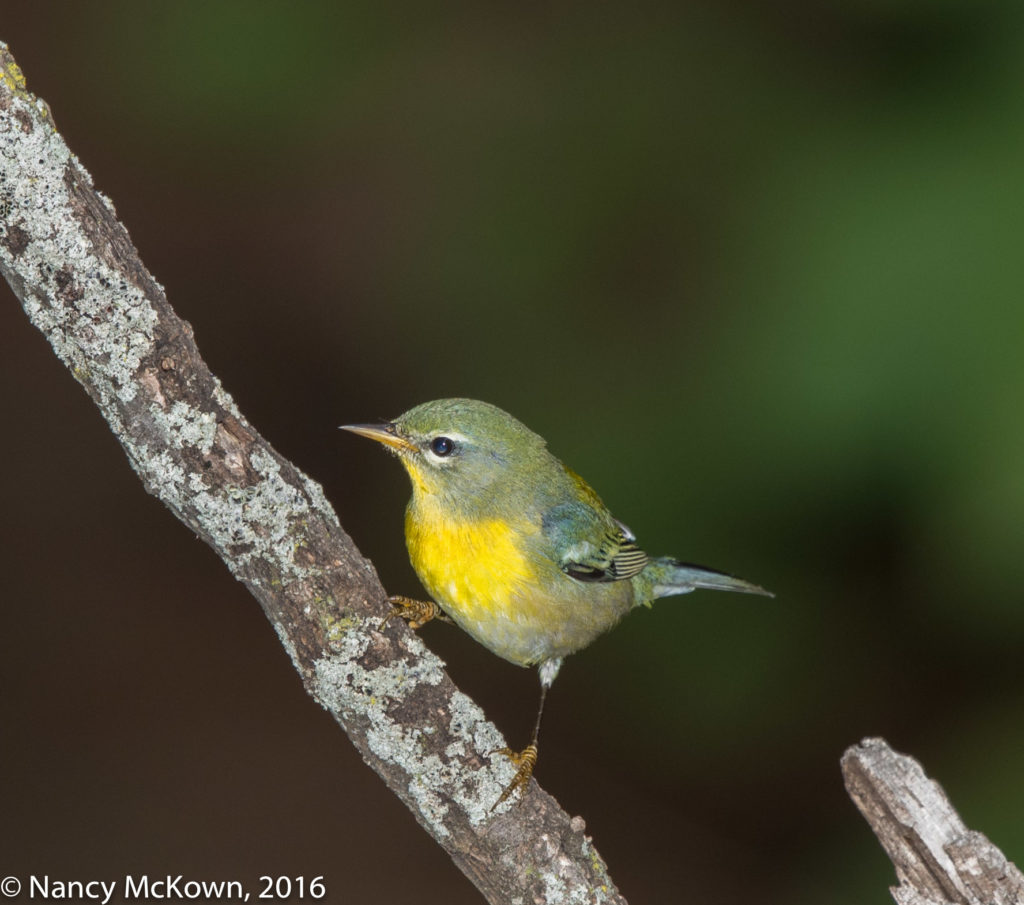Photographing a Golden Winged Warbler
The Golden Winged Warbler (female or young male) is a new bird for me. She appeared near the fountain suddenly and stayed only a few minutes. Too nervous to jump into the water with the other birds, she flew back and forth perching on different branches situated close to each other, but in very different light.
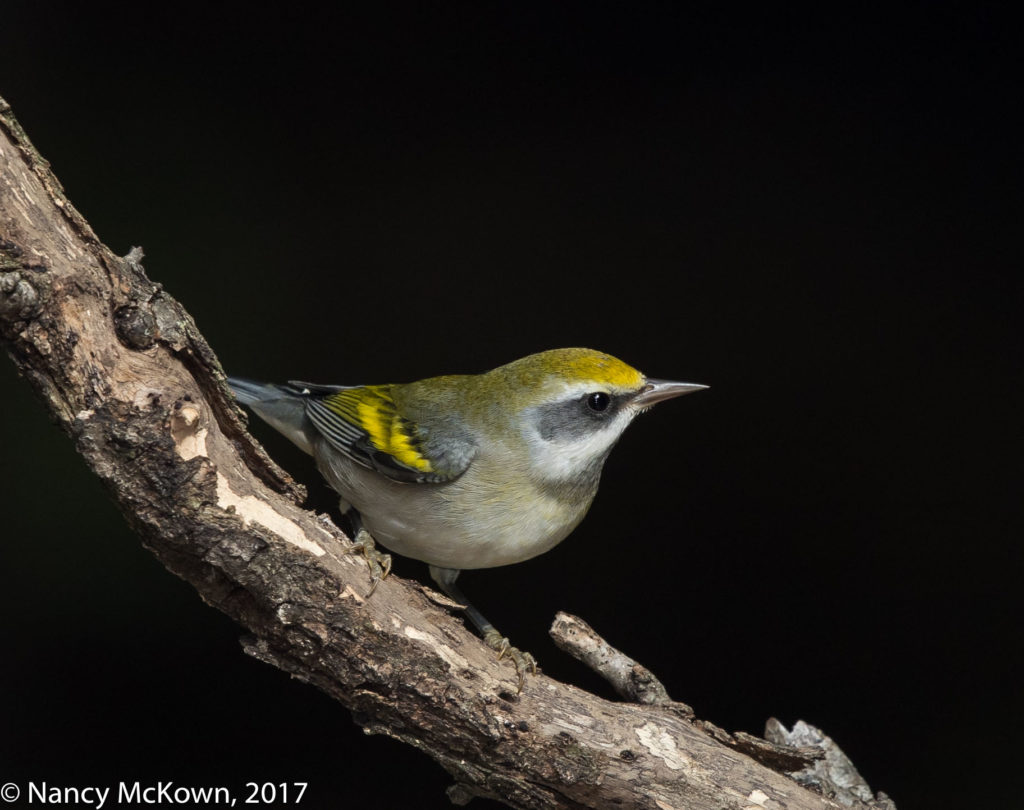
Enlarge to see strong image
detail in the white areas.
On a Branch Situated in evenly
filtered light- with Flash.
ISO640; f/8; 1/250 Second
Transitioning With the Light
The darkish branch upon which the bird perches in the above shot was situated in evenly lit shade. A relatively dark scene, the flash provided a good amount of fill light and captured details on the dark and light parts of the bird. The wooded background (already 2 stops or more darker than the perching area), came through as black. The histogram shows many more dark areas than light… not an ideal bell curve, but no blinkies.
If she had only stayed there! Dashing quickly and erratically, she flew over to a light toned, more reflective branch located only a few feet away. This branch (see photo below) was saturated in overhead direct sunlight and so was the bird when she alighted there. The highlight alerts I saw through the viewfinder confirmed that the harsh light would overexpose the images, rendering certain white areas on the warbler with little or no detail.
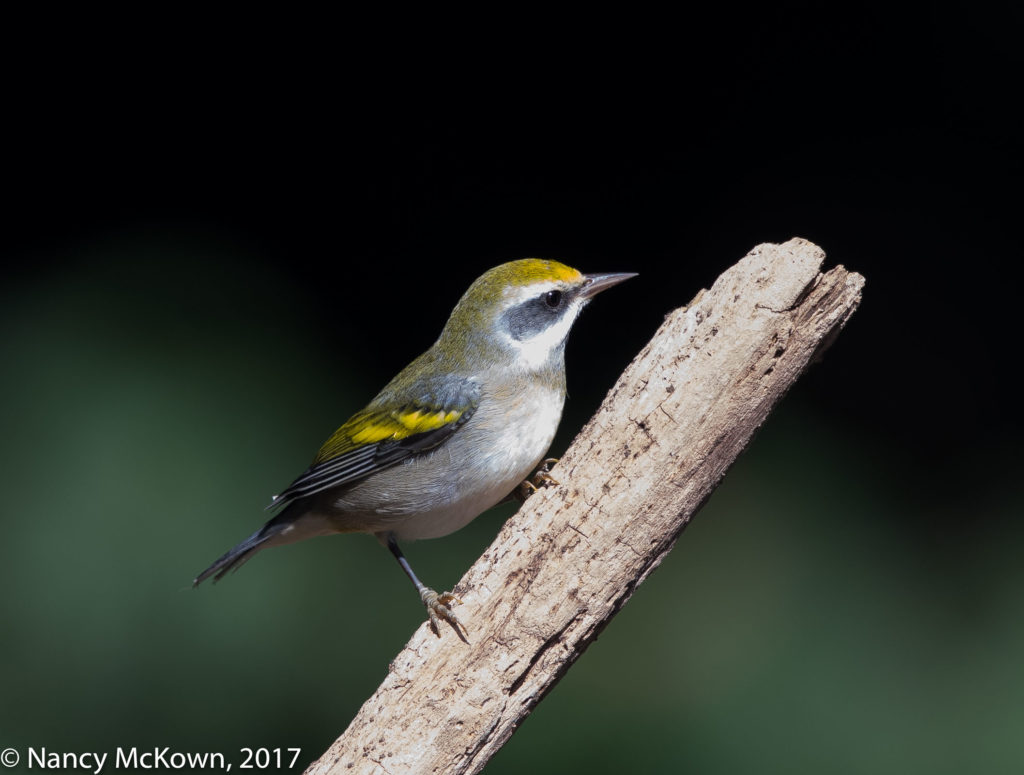
Shot in Raw.
No details Could be Restored
in Post Processing – See close-up below.
ISO640; f/8; 1/250 Second
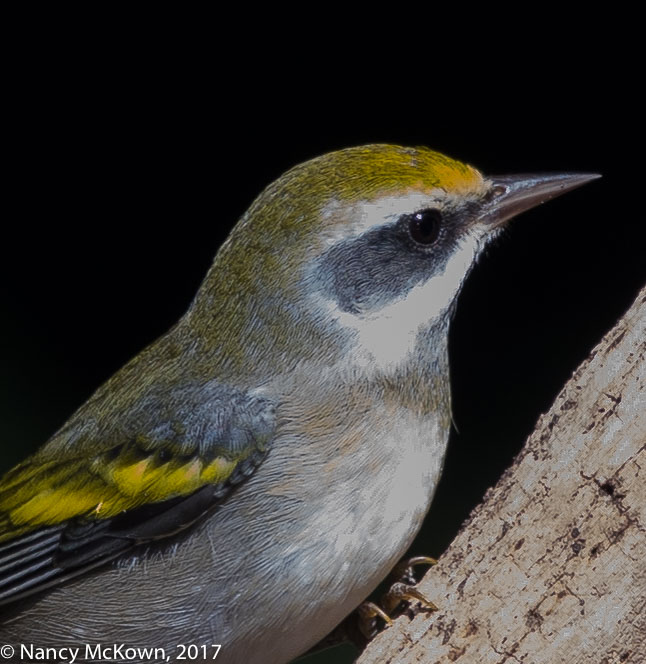
Feather Details on Face, Neck and
Breast were lost and are Irretrievable in Post Processing
Time to Address Highlight Alerts
A Highlight Alert is basically a quick check of overly bright areas (overexposure) on the image. If you have turned this DSLR camera option on, you will see blinking alerts on your LCD review screen after you’ve taken the photo. If the alert is not in an obvious or important portion of the image, the patch of overexposure does not matter. Ignore the blink and stick with the initial exposure readings. If the blinkies are flashing on critical areas of the subject, it’s probably best to quickly adjust your exposure settings. (NOTE: With bird photography, there is rarely time move to a different location and reshoot.)
During this shoot, all it took was for the bird to relocate a few feet away to a nearby branch and the bulk of my images were ruined. As I think back, there might have been time and opportunity to: a) Check the highlight alerts (to see if they were blinking in critical areas of the image); b) Turn off the flash; c) Alter exposure settings to correct the overexposed portions of the image; and d) Reshoot.
Given adequate time, this is how I should have proceeded:
- If the graph of the histogram is just touching the right edge, the exposure should be fine.
- If the data is not quite to the right edge of the histogram, just add exposure – either manually or by moving the AEC dial a little to the right. (on the “+” side)
- If the data is crawling way over the right edge of the histogram (clipping) that means that there’s WAY TOO MUCH LIGHT. This is very bad. Lost details means lost forever. No post processing software can bring back those over exposed details. Simple solution: Manually adjust exposure or move the AEC dial one or more stops to the left (subtract exposure – on the “-” side).
- Take another test photograph and recheck your histogram. Keep making adjustments until the RIGHTMOST data is just touching the right edge of the histogram.
It’s not hard to screw up exposure settings when a fabulous bird appears unexpectedly in front of the camera. Despite all my time in the field, excitement can still cause me to neglect to change some setting on the camera. In this instance, even with the camera set to RAW, mistakes like that almost always matter.
Subspecies or Hybrid
This individual photographed above has the markings of a classic Golden Winged Warbler. Golden Winged Warblers occasionally hybridize with the Blue Winged Warblers and produce two separate hybrid types: a) the Brewster: yellow head and throat, white belly and white wing bars; and b) the Lawrence version: yellow crown and belly, black throat and eye patch and white wing bars.
In my many bird photography adventures, I have photographed several subspecies, but I have never seen or photographed a bird that would be considered a hybrid. A subspecies is a variety of the same species….a population (usually geographically isolated) that has a slightly different appearance than others of its own species. A hybrid is born when two different and closely related species successfully breed.
An excellent article about hybridized warblers “Why Hybridize?” by Dr. Rachel Vallender, can be found at this link.
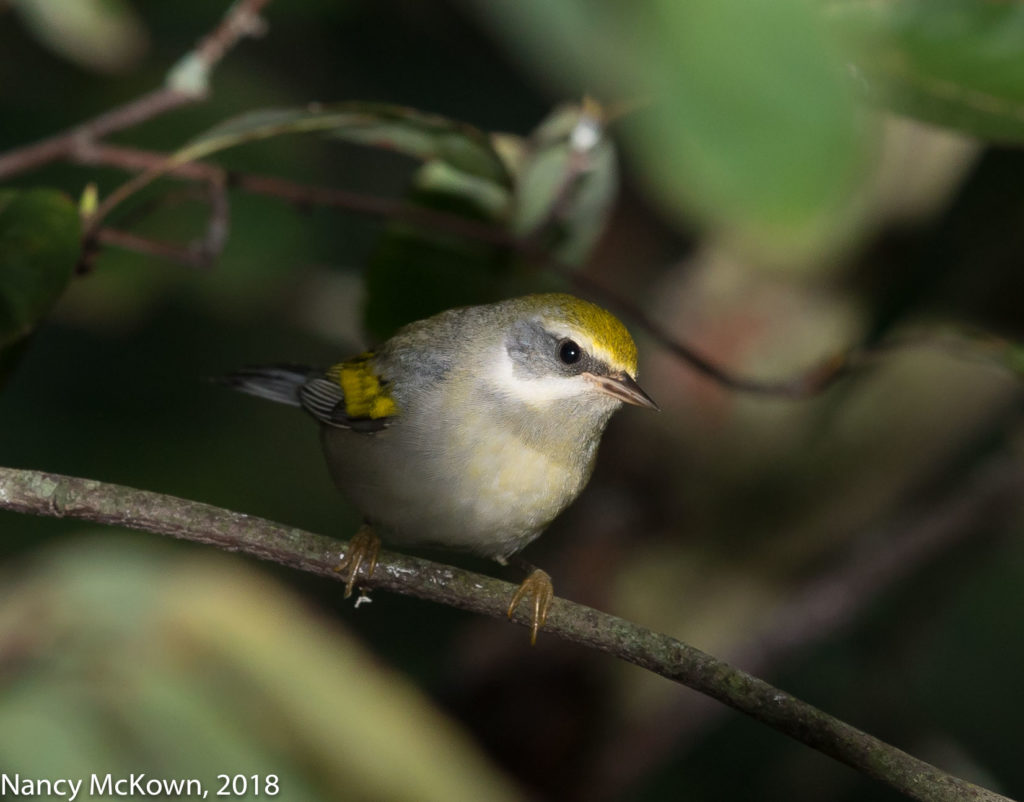
Fall, 2018
ISO400; f/7.1; 1/200 Second



